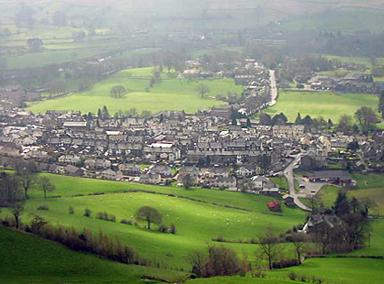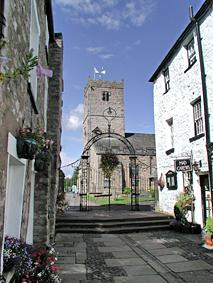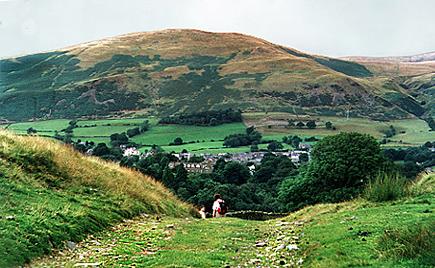Yorksview

|
Sedbergh lies in the top left
hand corner, as we geographers say, of the West Riding. It is in the
Yorkshire Dales National Park and is on The Dales Way (see Places). However,
it is now in the administrative area of Cumbria. (See Yorkshire is
Yorkshire). Sedbergh |
|
|
|
Saxons, Vikings and Normans made their mark. Sedbergh is probably Viking for
flat-topped hill. The town obtained market rights in 1150. Cobbled streets
date back to when knitting and woollen making flourished. There are street
names like Joss Lane, Finkle Street, Back Lane and Castlehaw Lane. At
Castlehaw the Normans built a defensive castle to take on the Scots. The
remains can be seen. St Andrew’s Church dates back to the Normans. There is
a Quaker meeting house dating from 1675; George Fox preached here. Most pupils board. The school is arranged in Houses where they eat and sleep. The Houses are Evans, Hart, Lupton (of course), Powell, Robertson, School, Sedgwick and Winder. Each House has 55 members, two being girls’ Houses, each with their own flag, motto and colours. I’ve always liked the House system at schools; it fosters identity, loyalty and competition. Kirkby Lonsdale |
|
In the school cloisters, mirrored in other schools across the country, are
the names of 249 Old Sedbergians and staff who died in the Great War and 192
who died in the Second World War. That awful sacrifice by two generations. The Howgill Fells |
|
So that’s Sedbergh. Sedbergh in Yorkshire. A fish and chip shop there proudly calls itself White Rose Fisheries to emphasise where it is. Politicians and bureaucrats, damn them.


